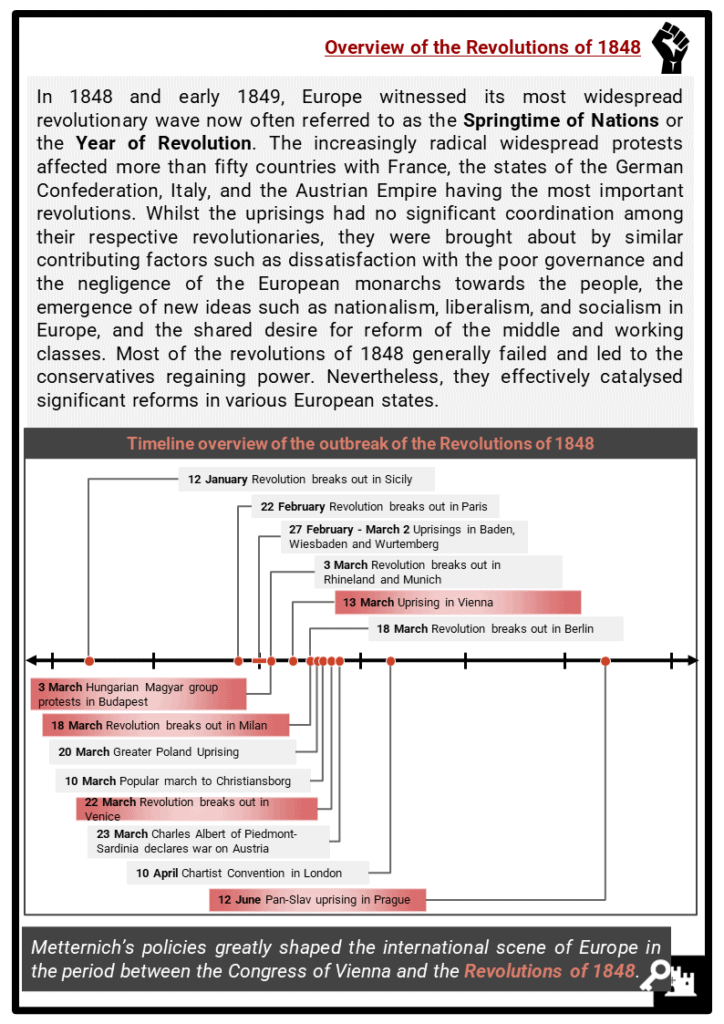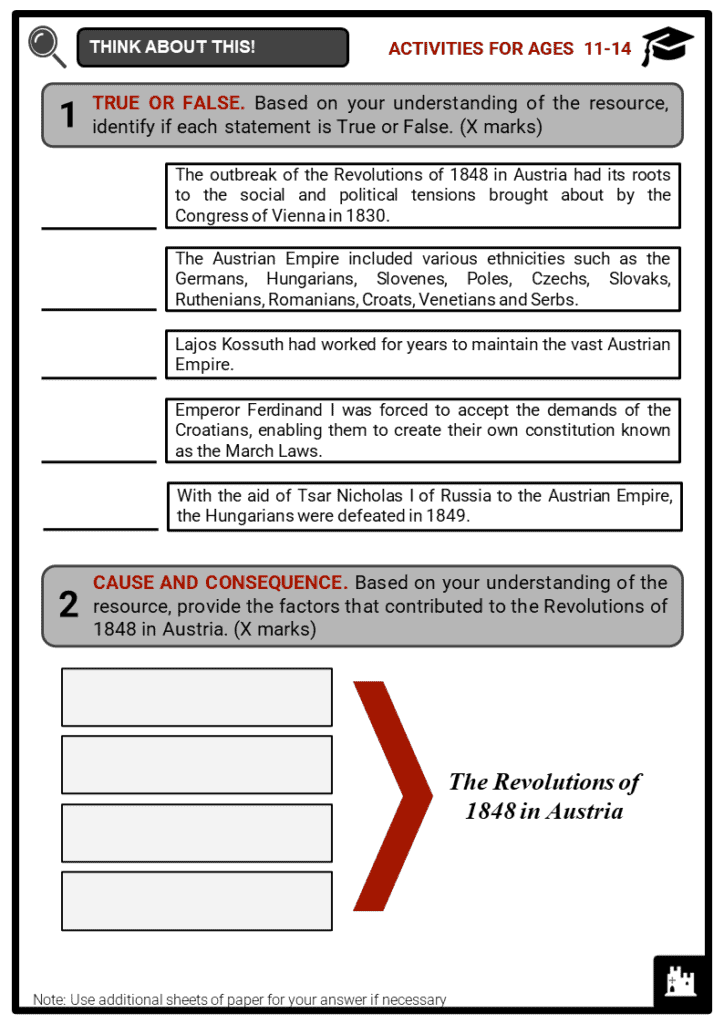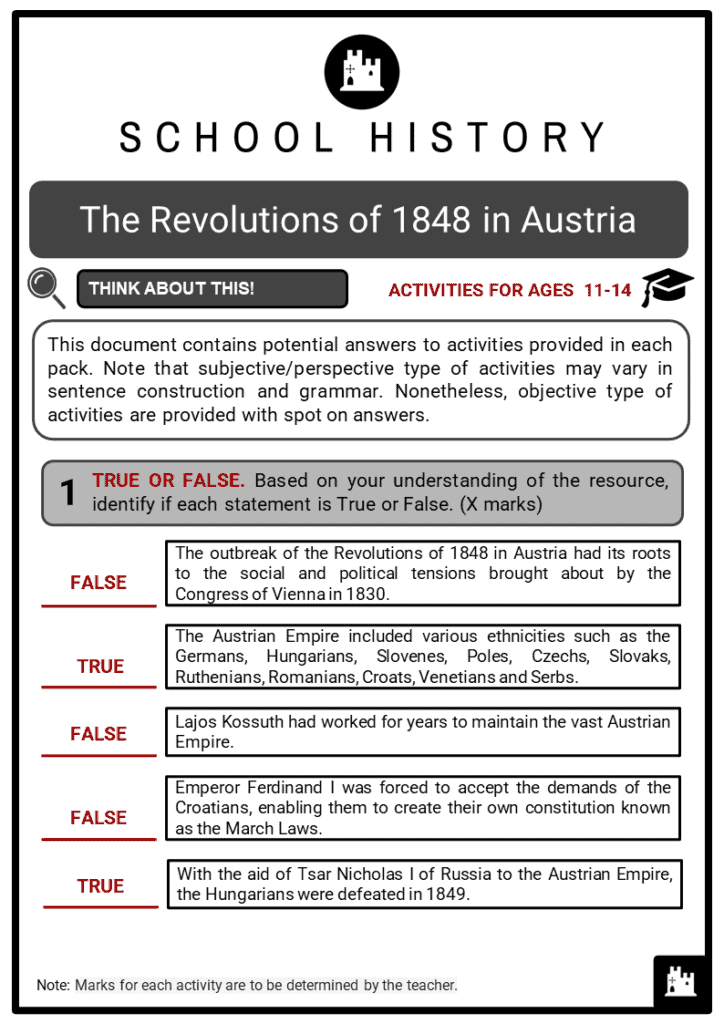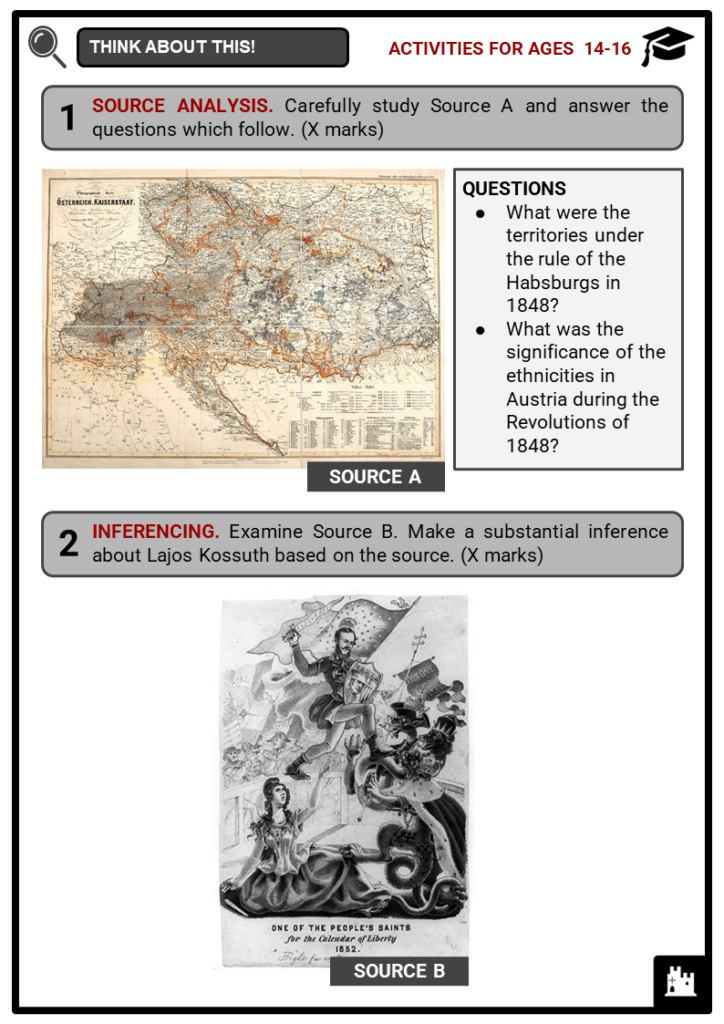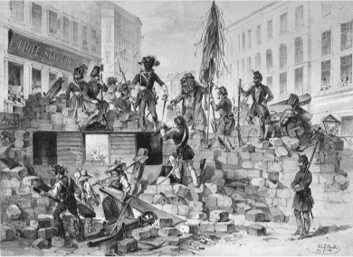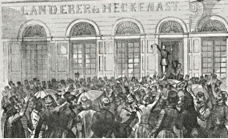Download The Revolutions of 1848 in Austria Worksheets
Do you want to save dozens of hours in time? Get your evenings and weekends back? Be able to teach The Revolutions of 1848 in Austria to your students?
Our worksheet bundle includes a fact file and printable worksheets and student activities. Perfect for both the classroom and homeschooling!
Table of Contents
Add a header to begin generating the table of contents
Summary
- Overview of the Revolutions of 1848
- Features of the Revolutions of 1848 in Austria
- The upsurge of uprisings in Austria
- Outcomes of the Revolutions of 1848 in Austria
Key Facts And Information
Let’s find out more about The Revolutions of 1848 in Austria!
- The Revolutions of 1848 in Austria were part of the widespread revolutionary wave that swept across Europe. The revolutionary activities in the vast empire had a nationalist character amidst numerous ethnicities. An early victory was achieved with the fall of Metternich that further inspired revolts in various parts of the monarchy.
- The liberals attained a few victories, particularly the abolition of the remaining forms of agrarian feudalism. However, the conservatives eventually returned to power. When the revolutions concluded in 1849, Austria became an even more autocratic state.
Overview of the Revolutions of 1848
- In 1848 and early 1849, Europe witnessed its most widespread revolutionary wave now often referred to as the Springtime of Nations or the Year of Revolution. The increasingly radical widespread protests affected more than fifty countries with France, the states of the German Confederation, Italy, and the Austrian Empire having the most important revolutions. Whilst the uprisings had no significant coordination among their respective revolutionaries, they were brought about by similar contributing factors such as dissatisfaction with the poor governance and the negligence of the European monarchs towards the people, the emergence of new ideas such as nationalism, liberalism, and socialism in Europe, and the shared desire for reform of the middle and working classes. Most of the revolutions of 1848 generally failed and led to the conservatives regaining power. Nevertheless, they effectively catalysed significant reforms in various European states.
Features of the Revolutions of 1848 in Italy
- The outbreak of the Revolutions of 1848 in Austria had its roots to the social and political tensions brought about by the Congress of Vienna in 1815. With the weakening Concert of Europe, the emergence of new ideas fueled the revolts that affected major cities in the continent. The brewing conflict in the empire made it clear that the Habsburg monarchy would not remain unstirred by the uprisings.
- What was the situation in the Austrian Empire in 1848?
- The freedom of the press was restricted.
- Many university activities were limited and fraternities were banned.
- Tensions arose from religious differences and land use rights.
- Higher taxes enacted to fund the army were burdensome.
- Factors that contributed to the unrest:
- Serfdom was a cause of suffering of many people.
- There was a general disgust with conservative domestic policies.
- Many people urged for more freedoms.
- Nationalism was on the rise.
- Crop failures led to famine and economic depression.
- The Austrian Empire included various ethnicities such as the Germans, Hungarians, Slovenes, Poles, Czechs, Slovaks, Ruthenians, Romanians, Croats, Venetians and Serbs.
- Significant figures of the revolutions
- Klemens von Metternich: He was the Austrian minister who saw nationalism and liberalism as a threat to the Austrian Empire.
- Ferdinand I of Austria: He was the emperor of Austria during the Revolutions of 1848.
- Lajos Kossuth: He was a Hungarian orator and lawyer who became the symbol of Hungarian nationalism.
- Josip Jelačić: He was the newly-appointed ban, or provincial governor, of Croatia-Slavonia that helped crush the Hungarian revolution against the empire.
The upsurge of uprisings in Austria
- The nature of the Revolutions of 1848 in Austria may be classified into social, democratic-liberal, and national. The middle class liberals recognised that changes had to be made in the government. Outside Vienna, nationalism later became the principal drive behind the revolts.
- On 13 March 1848, news of the Paris uprising reached Vienna and inspired crowds of people, mostly students and members of liberal clubs, to protest in the city to call for basic freedoms and a liberalisation of the regime. Without the intention to antagonise the people, the government initially responded by calling out troops to suppress the crowds which resulted in serious clashes between the authorities and the people.
- To avoid further provocation of the crowds, the government dismissed Klemens von Metternich and promised to declare a constitution. Metternich had worked for years to maintain the vast Austrian Empire, and in the process, became a symbol of repression, particularly among the ethnic groups.
- Between March and October 1848, revolution and counterrevolution surged in Vienna. In April, Emperor Ferdinand I issued a constitution that provided for an elected legislature. With the revolutionaries gaining more influence in mid-May, the Habsburgs and the government fled Vienna.
- When the legislature met in June, it rejected the constitution in favour of one that promised to be more democratic. By this time, the revolution began to run out of steam as support from the bourgeoisie waned.
- This allowed the Habsburgs and their advisers to regroup. In October, the army successfully retook Vienna and executed a number of the city’s radical leaders. The legislature moved to Kremsier in the province of Moravia and continued to work on a constitution.
- Upon finishing the constitution, it was overruled and then dismissed by the emperor. Whilst the legislature failed to implement a working constitution in Austria, it issued a significant legislation with long-lasting influence: the liberation of the peasantry.
- The Revolutions of 1848 also affected other ethnic groups in the Habsburg monarchy, such as the Hungarians who had long been motivated by nationalism.
- The Hungarian nobility started to work towards strengthening the national spirit since 1815, demanding the use of the Hungarian language rather than German. The events in Paris and Vienna helped galvanize the Hungarian Diet that convened at Pest.
- In March 1848, the Hungarian Diet led by Lajos Kossuth demanded more reforms, civil liberties and far greater autonomy.
- Under liberal pressures from Vienna, Emperor Ferdinand I was forced to accept the changes enabling the Hungarians to create their own constitution known as the March Laws.
- In an ironic twist of fate, the Hungarians faced resistance from the other ethnicities in the country who were motivated by the idea of nationalism and self-rule.
- Kossuth and his new regime had no intention of consideringthe minorities and excluded them in membership elections for the parliament. They were as unsympathetic to the demands and hopes of the Serbs, Croats, Slovaks and Romanians as Austrians had been to the Hungarians.
- Consequently, the Habsburg Kingdom of Croatia and the Kingdom of Slavonia cut ties with the Hungarian government in Pest and dedicated themselves to the imperial cause. The pro-Habsburg governor of Croatia, Josip Jelačić, rejected all authority by the Hungarian government and began negotiations with the Serbs to resist Hungarian rule.
- From April to September, the Hungarians were able to resist both the minorities' uprisings and the actions of the Austrian government. However, the Habsburgs' regaining power in Vienna and their victories over the uprisings in Italy incited the government to demand greater concessions from the Hungarians. A field marshal was appointed by the imperial court to control all the armies in Hungary but was attacked on arrival in the region.
- In response, the imperial court ordered the dissolution of the Hungarian parliament and government, and appointed Jelačić to take the field marshal's place.
- As the Austrian troops prepared to leave Vienna to suppress the Hungarians, a crowd sympathetic to the Hungarian cause attempted to prevent the troops from leaving. This led to the October Crisis in Vienna that ended in the execution of the leaders of the resistance.
- Meanwhile, the war continued in Pest, with each side gaining dominance at one time or another. In April 1849, the Hungarians proclaimed total independence from the Habsburgs but the new Austrian emperor Franz Joseph requested the aid of Russia.
- Now with the aid of Tsar Nicholas I of Russia, the Hungarians were defeated.
- Kossuth fled to the Ottoman Empire where he would continue to denounce Habsburg oppression whilst his successor surrendered to the Russians in August after several losses.
- Austria ruled the land more firmly from then on.
- The revolutionaries in other parts of the Austrian Empire grew motivated with Metternich’s resignation. They followed the Hungarians' lead and revolts broke out in Bohemia, Lombardy-Venetia, and Prussia.
- In the Kingdom of Bohemia, tensions between Slavic and German nationalist arose. A Pan-Slavism conference was held in an attempt to stop Bohemia from being swallowed by Germany.
- However, during a protest in the streets, the wife of the field marshal was killed.
- Outraged, the field marshal seized the city, dispersed the congress, and declared martial law throughout the region.
- In the Kingdom of Lombardy-Venetia, the Austrians were initially overthrown only to return stronger, defeating the revolutionaries at the battles of Custoza (1848) and Novara (1849).
- These victories gave great confidence to the Habsburgs.
- In Prussia, King Friedrich Wilhelm promised a constitution.
- Seeking national unification, the Frankfurt National Assembly proposed a constitution with Friedrich Wilhelm as monarch of a united federal Germany. This would have reduced the relationship between Austria and Hungary to a personal union under the Habsburg.
- However, in the end, this proposal was rejected by Friedrich Wilhelm.
Image sources:


